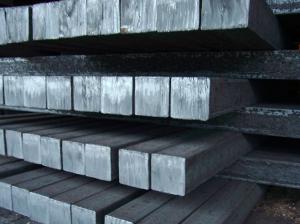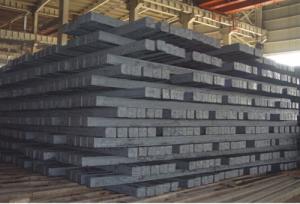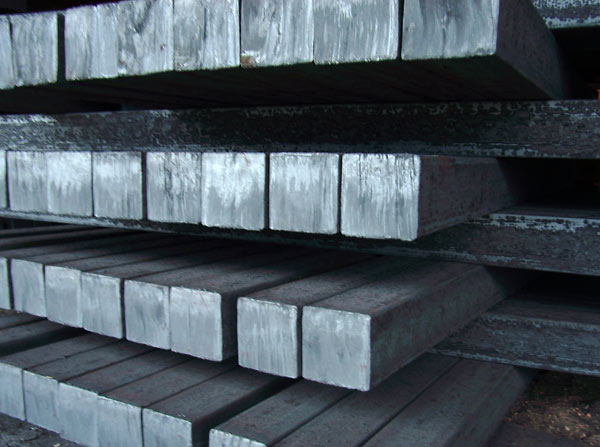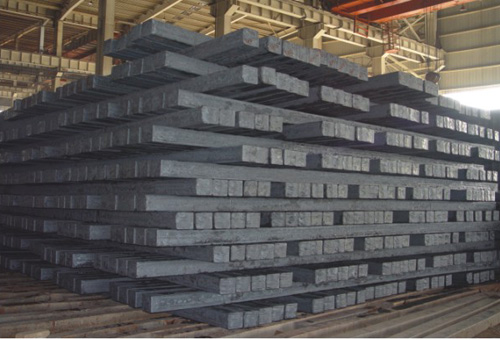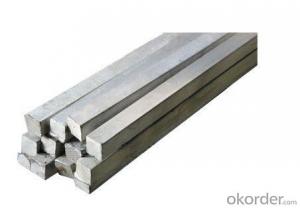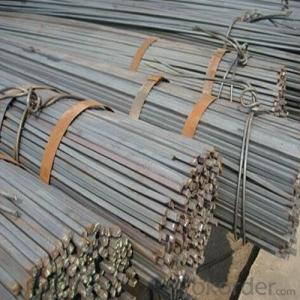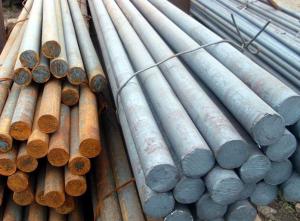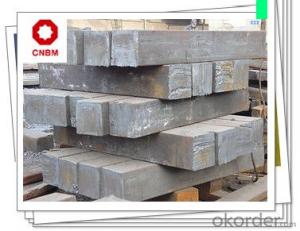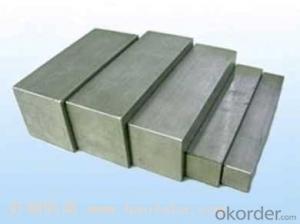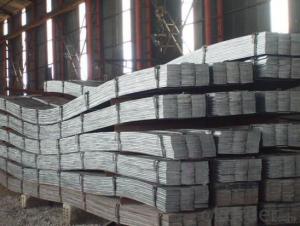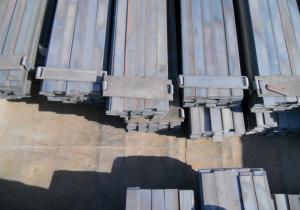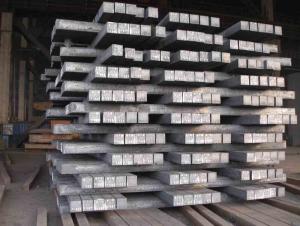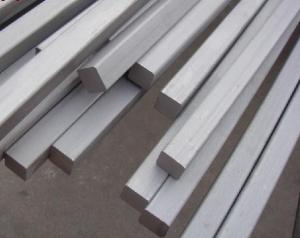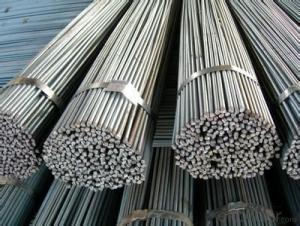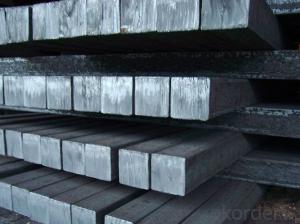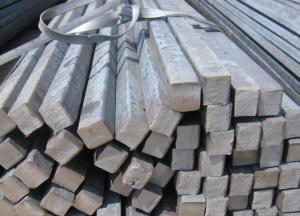Q235 Square bar square bar for construction
- Loading Port:
- Tianjin
- Payment Terms:
- TT or LC
- Min Order Qty:
- 10000 m.t.
- Supply Capability:
- 100000 m.t./month
OKorder Service Pledge
OKorder Financial Service
You Might Also Like
Product Description:
OKorder is offering Q235 Square Bar for construction at great prices with worldwide shipping. Our supplier is a world-class manufacturer of steel, with our products utilized the world over. OKorder annually supplies products to European, North American and Asian markets. We provide quotations within 24 hours of receiving an inquiry and guarantee competitive prices.
Product Applications:
Q235 Square Bar for construction are ideal for structural applications and are widely used in the construction of buildings and bridges, and the manufacturing, petrochemical, and transportation industries.
Product Advantages:
OKorder's Q235 Square Bar are durable, strong, and resist corrosion.
Main Product Features:
· Premium quality
· Prompt delivery & seaworthy packing (30 days after receiving deposit)
· Corrosion resistance
· Can be recycled and reused
· Mill test certification
· Professional Service
· Competitive pricing
Product Specifications:
Usage/Applications of HR Square Bar:
-The Square Bar is normally used as structure steel.
-Row material for other structure steel like steel angles, channels, I-beams, H-beams, etc…
Packaging & Delivery of HR Square Bar:
-Packing Detail: The products can be packed in bundles by steel wires.
-Marks: We make tag marks and color marks. The tag marks with white background and red company logo will be tied up to each bundle of the products. The information is usually including basic information of products and company and other information requested by customers. As for color marks, we will paint both ends of bundles to make sure that it will be more convenient for customers to distinguish them from other products.
-Delivery Detail: 30~45 working days after receive buyer’s T.T. or L/C.
Transportation:
-The products can be delivered by bulk vessel or by container. As for container, products with the length of 6m will be loaded in 20’ container, with 9m or 12m, in 40’ container.
-The maximum quantity of loading of container is 25 tons.
-The products are usually transported to the nearest port from the production place.
FAQ:
Q1: Why buy Materials & Equipment from OKorder.com?
A1: All products offered byOKorder.com are carefully selected from China's most reliable manufacturing enterprises. Through its ISO certifications, OKorder.com adheres to the highest standards and a commitment to supply chain safety and customer satisfaction.
Q2: How do we guarantee the quality of our products?
A2: We have established an advanced quality management system which conducts strict quality tests at every step, from raw materials to the final product. At the same time, we provide extensive follow-up service assurances as required.
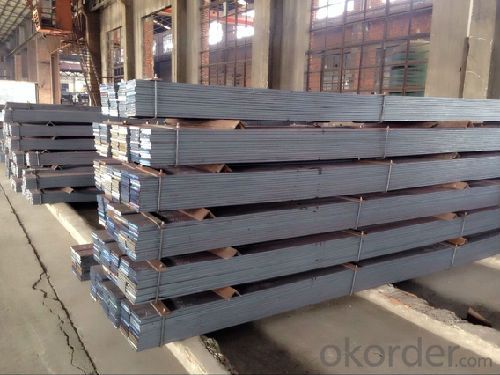
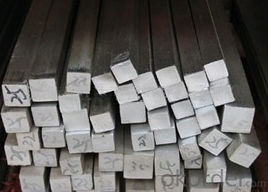
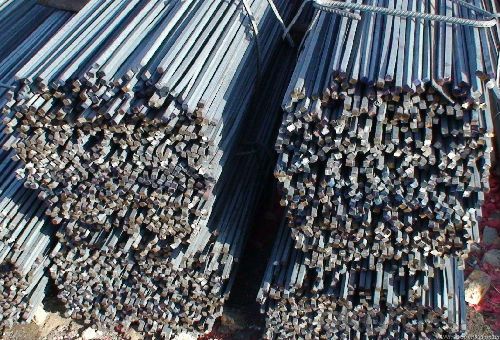
- Q: Can a steel square be used for checking the squareness of a jointer guard?
- Yes, a steel square can be used for checking the squareness of a jointer guard.
- Q: What are the markings on a steel square used for?
- The markings on a steel square serve multiple purposes in carpentry and other construction-related tasks. They play a crucial role in accurately measuring and marking angles, distances, and dimensions when working with wood, metal, or other materials. The graduations along the edges are the most commonly seen markings on a steel square. These graduations, usually in inches, centimeters, or both, are used to measure lengths and distances. They allow carpenters to swiftly and precisely determine the dimensions of a material or the space between two points. Aside from the graduations, a steel square also features markings for measuring angles. The most significant angle markings are the 45-degree and 90-degree angles. These angles are essential for creating accurate right angles and bevels, which are vital in constructing symmetrical and square structures. Additionally, a steel square often incorporates a protractor scale. This scale enables the measurement and marking of angles other than 45 and 90 degrees. This feature proves particularly beneficial when working on projects that necessitate specific angles, such as roof structures or staircases. Certain steel squares may even possess extra markings like rafter tables or conversion charts. These markings provide precise measurements and calculations for various construction tasks, saving time and reducing the need for manual computations. All in all, the markings on a steel square function as a versatile and dependable tool for carpenters and builders. They facilitate accurate measurements, precise angle marking, and efficient calculations, making the steel square an indispensable tool in construction projects.
- Q: What are some common techniques for using a steel square in box making?
- Using a steel square in box making is an essential tool that can help ensure accuracy and precision in the construction process. Here are some common techniques for utilizing a steel square in box making: 1. Checking for squareness: One of the primary uses of a steel square is to determine whether the box's corners are perfectly square. To do this, place the steel square against one corner of the box, ensuring it is aligned properly. Then, observe if the square's edge lines up with the adjacent edges of the box. If they align perfectly, the corner is square. If not, adjustments can be made to achieve squareness. 2. Marking and measuring: A steel square often includes various measurements and angles marked on its surface. These markings can be used to measure and mark precise dimensions on the box's material. By aligning the square's edge with the material's edge or corner, measurements can be accurately transferred, ensuring precise cuts and joins. 3. Determining angles: Steel squares often feature angles such as 90 degrees, 45 degrees, and 30 degrees marked on their surfaces. These angles can be utilized to determine and mark angles required for box construction, such as mitered corners or bevel cuts. Simply align the appropriate angle marking with the material edge to accurately transfer the desired angle. 4. Supporting assembly: During box assembly, a steel square can assist in holding the pieces in place while securing them together. By placing the square against the edges or corners, it can act as a support to ensure the proper alignment and squareness of the pieces being joined. This is particularly useful when using clamps or fasteners to hold the box together. 5. Checking for flatness: In addition to squareness, a steel square can also be used to check for flatness. By placing the square's edge against the surface of the box, any gaps or irregularities can be identified. This technique helps ensure that the box's sides and top are perfectly flat, resulting in a more professional and aesthetically pleasing finish. By employing these common techniques, a steel square can greatly assist in the box making process, facilitating accuracy, squareness, and precision at various stages of construction.
- Q: Can a steel square be used for checking the squareness of a router table top?
- Yes, a steel square can be used for checking the squareness of a router table top. A steel square is a commonly used tool for checking squareness and can provide accurate measurements. It can be placed against the edges of the table top to ensure that they are perpendicular to each other. By comparing the squareness of the table top with the steel square, any deviations or misalignments can be easily identified. This is essential for ensuring the precision and accuracy of the router table, as a perfectly square table top is crucial for achieving accurate and consistent cuts.
- Q: What are the dimensions of a standard steel square?
- The dimensions of a standard steel square typically vary depending on the manufacturer and specific model, but it is commonly available in sizes ranging from 6 inches to 12 inches on each side.
- Q: How do you use a steel square to determine the slope of a drainage pipe?
- To determine the slope of a drainage pipe using a steel square, you first need to place the square against the side of the pipe and ensure it is level. Then, measure the distance from the bottom of the pipe to the square at the other end. This measurement will give you the rise. Next, measure the length of the pipe along the bottom edge of the square. This measurement will give you the run. Finally, divide the rise by the run and multiply it by 100 to calculate the slope as a percentage.
- Q: How do you use a steel square to measure and mark 157.5-degree angles?
- To use a steel square to measure and mark a 157.5-degree angle, you can follow these steps: 1. Start by aligning the short side of the steel square with the edge of the material or surface you want to mark the angle on. 2. Rotate the square until the long side is aligned with one of the reference points or edges on the material. The reference point could be a corner or an existing line. 3. Next, locate the 45-degree angle on the steel square. This is usually marked with a small notch or line. 4. From the 45-degree angle, count another 45 degrees in the same direction. This will give you a 90-degree angle. 5. From the 90-degree angle, count another 45 degrees in the same direction. This will give you a 135-degree angle. 6. Finally, count another 22.5 degrees in the same direction from the 135-degree angle. This will bring you to a total of 157.5 degrees. 7. With the steel square in position, make a small mark or draw a line to indicate the desired 157.5-degree angle. It is important to note that steel squares typically have limited degree markings, often up to 45 degrees or 90 degrees. To measure angles beyond these limits, you have to use multiple angles or rely on other measuring tools, such as a protractor or bevel gauge.
- Q: It can be used as the steel electrical equipment grounding
- In the electrical grounding body, generally use the steel pipe, angle steel, flat steel, round steel and other steel specially made grounding. The artificial grounding body and the ground wire form a grounding device, so that various earthing of the electrical equipment is connected with the ground through a grounding device. The artificial earthing body has two kinds of vertical embedment and horizontal embedment. The vertical buried pipe, angle steel, round steel grounding body, and have sufficient mechanical strength; ground level buried body with round steel, flat steel, common type, with several ring and radiation type. It is better to use galvanized steel when laying artificial earth in strongly corrosive soil. The steel used in the earth body shall be in accordance with the requirements of thermal stability and uniform pressure.
- Q: How do you use a steel square for marking diagonal lines?
- To use a steel square for marking diagonal lines, start by placing the square on the surface or material you want to mark. Ensure that one side of the square aligns with the edge of the material. Then, hold a pencil or marker against the other side of the square, at the desired starting point of the diagonal line. Next, rotate the square so that the diagonal line you want to mark aligns with the edge of the material. Keep the square steady and firmly against the material to ensure accuracy. With the pencil or marker still held against the square, slowly and carefully slide it along the edge of the square, following the diagonal line. As you move the square along the material, the pencil or marker will leave a clear and straight diagonal line. Repeat this process for any additional diagonal lines you need to mark. It is important to maintain a steady hand and apply consistent pressure to achieve precise and accurate markings. Remember to always double-check the square's alignment and your measurements before proceeding with any cutting or further work based on the marked lines.
- Q: Can a steel square be used for checking the squareness of window jambs?
- Yes, a steel square can be used for checking the squareness of window jambs. A steel square is a versatile tool that is commonly used in carpentry and construction for checking the squareness of various objects including window jambs. By placing the steel square against the corners of the window jamb, one can determine if the corners are perfectly perpendicular or if there are any discrepancies. If the steel square is aligned perfectly with the corners, then the window jamb is considered square. However, if there are gaps or inconsistencies, adjustments may need to be made to ensure proper installation and fit of the window. Overall, a steel square is a reliable tool that can be used effectively for checking the squareness of window jambs.
Send your message to us
Q235 Square bar square bar for construction
- Loading Port:
- Tianjin
- Payment Terms:
- TT or LC
- Min Order Qty:
- 10000 m.t.
- Supply Capability:
- 100000 m.t./month
OKorder Service Pledge
OKorder Financial Service
Similar products
Hot products
Hot Searches
Related keywords
